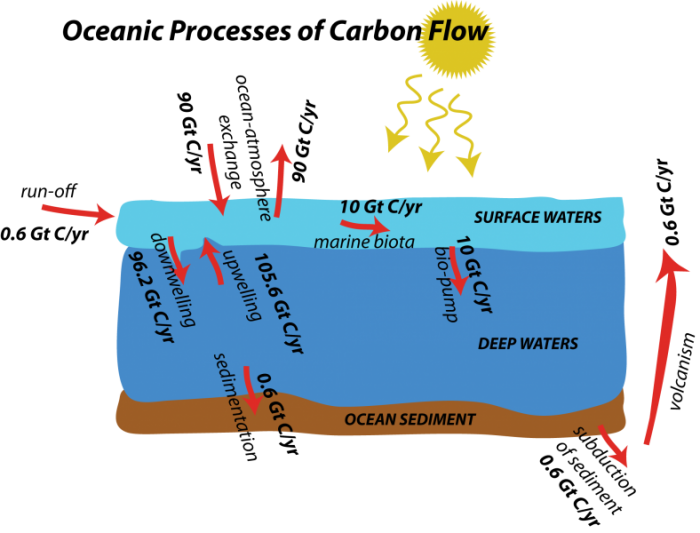Print
The Marine Carbon Cycle
Processes of Carbon Flow in the Oceanic Realm
Far less obvious to us than the terrestrial processes we just discussed, the cycling of carbon in the oceans is tremendously important to the global carbon cycle. For example, the oceans absorb a large portion of the CO2 emitted through anthropogenic activities. As with the terrestrial part of the global carbon cycle, we will explore here the various processes involved in transferring carbon in and out of the oceans.
Below, we see a general depiction of the flows involved in the oceanic realm, along with the flow magnitudes.

Pathways and fluxes of carbon exchange in the oceans
Credit: David Bice © Penn State University is licensed under CC BY-NC-SA 4.0
